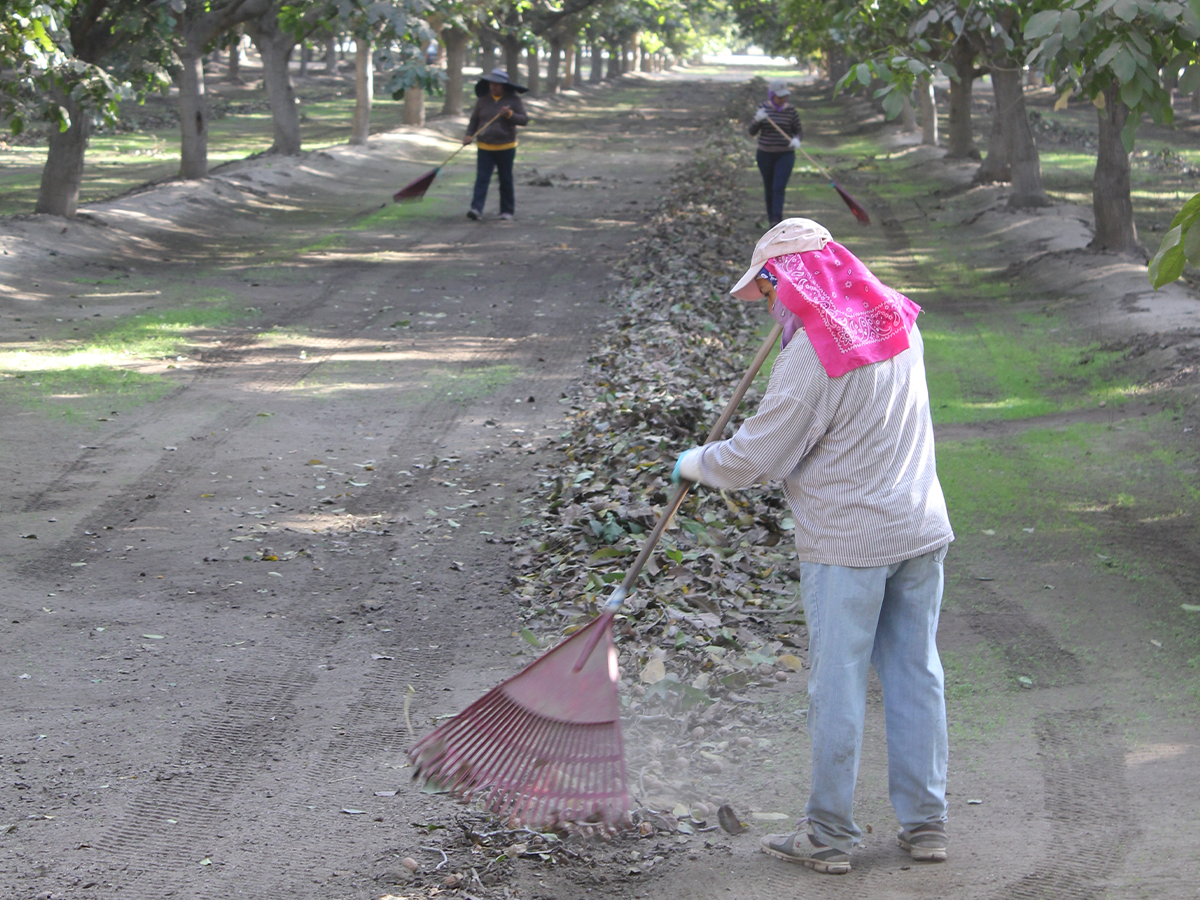
Ensuring walnut trees have sufficient nitrogen to reach their yield potential while protecting groundwater quality requires knowledge of seasonal nitrogen use by plants.
Nitrogen is the most used mineral in walnut production. Eight percent of available nitrogen goes to make proteins, but N is also used to produce amino acids, DNA, hormones, chlorophyll and defense compounds. Nitrogen applications in excess of tree demand leads to increased vegetative growth, delays in leaf drop and dormancy and increases in disease susceptibility. Nitrogen deficiency limits growth and causes leaf chlorosis.
In a presentation for the 2021 UCCE Virtual Walnut Series, UC Cooperative Farm Advisor Katherine Jarvis-Shean outlined the science behind management decisions on fertilizer applications and urged growers to ‘hit the sweet spot’ in nitrogen applications.
Organic matter in the soil, ammonium and nitrate are all forms of nitrogen. Soil organic matter contains nitrogen that is not readily available to plants. Microbes break organic matter down into ammonium over time. The rate is accelerated by moist, aerated and warm conditions. Ammonium, which is positively charged, is a readily available source of N that does not leach. If not taken up by plants, however, nitrification will occur and it will leach out of the root zone.
Trees regulate their uptake of nitrogen, Jarvis-Shean said. Applying this nutrient when the trees can use it, at the rate they can use it and in a place where it can be accessed will ensure tree nitrogen needs are met and losses below the root zone are minimized.
Uptake of nitrogen by plants is regulated by energy and transporter bottlenecks, Jarvis-Shean said. Trees will limit their N uptake beyond their need to not waste energy.
The first N application of the season for walnuts is recommended one month after leaf-out, generally in May. Earlier applications have the potential to leach out of the root zone because the trees are using stored N for growth.
Matching the supply of N provided with the tree demand is the goal throughout the growing season. Jarvis-Shean noted that the supply is not just what is applied in the orchard, but N in the irrigation water and in soil organic matter must be included as well.
Research has shown that in a mature walnut orchard with an expected 3-ton crop, an application of 124 pounds N per acre divided into three applications will meet tree needs. Jarvis-Shean said leaf sampling mid-summer is helpful in keeping track of N levels. A target to shoot for is in the 2.3% to 2.7% N range.
Complete information on walnut nutrient use can be found in the publication Guide to Efficient Nitrogen Fertilizer use in Walnuts.











